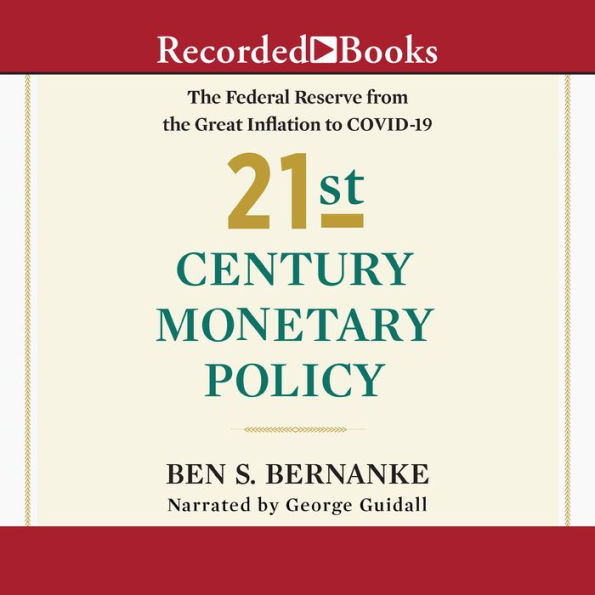Publishers Weekly
★ 04/25/2022
Federal Reserve leaders cope with soaring prices and collapsing economies in this penetrating history of America’s central bank since the mid-1960s. Bernanke (The Courage to Act), Federal Reserve chairman from 2006 to 2014, recaps chairman Paul Volcker’s quashing of the 1970s’ inflationary spiral with tight monetary policies that caused a deep recession; his own innovations during the 2008–2009 Great Recession, when he pioneered “quantitative easing” measures that bought up financial assets on a colossal scale; and current chairman Jay Powell’s heroics in resisting President Donald Trump’s political demands and implementing radical programs of lending and asset purchases during the 2020 Covid-19 crisis. Along the way, Bernanke shows how central banking doctrine shifted in debates over why interest rates declined and whether low inflation and low unemployment are compatible, and mulls monetary novelties like Bitcoin (don’t bank on it, he concludes). Bernanke delivers some tart commentary—he calls Republican attacks on his programs “scorched-earth right-wing partisanship”—but mainly sticks to the policy making, writing in marvelously lucid prose that explains complex economic issues in plain English. Suffused with high-stakes drama and clear thinking, this is one of the best accounts yet of the Fed’s tumultuous recent past. (May)
The New York Times Book Review - David Leonhardt
"This exercise of historical assessment from a central participant is one that more policymakers should probably try. It allows readers to make judgments along with Bernanke and think about what lessons today’s policymakers—who are once again battling inflation—might take."
Booklist - Jennifer Adams
"In a world where $2.15 trillion is floating in the U.S. economy, readers will be intrigued by the history and predictions Bernanke shares. This impressive and accessible book will appeal to historians and educators as well as those who want to understand America’s finances from a historical perspective. "
Financial Times - Best Books of the Summer: Economics
"[Bernanke] is ideally equipped to explain the economic forces and ideas behind the policies of central banks, especially the Fed, over the past half-century. The book is characteristically well argued."
The New York Times - Andrew Ross Sorkin
". . . [A] uniquely practical book as the public tries to better understand the powers of the Fed and Congress to juice or slow the economy amid a supply-chain crunch and sky-high demand."
Financial Times - Martin Wolf
"Bernanke is the most influential thinker and practitioner on central banking of our era. His book, 21st Century Monetary Policy, offers a lucid account of the evolution of central banking and the US central bank from the ‘great inflation’ of the late 1960s, 1970s and early 1980s to today and into the future."
Library Journal
12/01/2021
Everything has changed in times of COVID-19, including the tools now being used by the U.S. Federal Reserve to maintain the economy, which might have raised eyebrows not so long ago. Chair of the Federal Reserve from 2006 to 2014 and currently distinguished senior fellow at the Brookings Institution, Bernanke not only explains how these new tools work but looks back at the FED over a half-century to present evidence that it has always changed with the times to address immediate needs.
Kirkus Reviews
2022-03-07
The former chair of the Federal Reserve examines how and why that organization works to control financial crises.
There is a large distinction between monetary policy, which concerns how targeted money can be used to strengthen an economy generally, and fiscal policy, which concerns where funds are spent—for example, the CARES Act promulgated during the pandemic to fund public health measures but also to support workers and businesses most harmed by the crisis. “Unlike monetary policy,” writes Bernanke, “which can be adjusted quickly as needed, government spending and tax policies are not as easy to change.” The Fed has considerably more leverage in applying money as a tool for economic stimulus and relief—though, the author points out, there is a large political dimension to that enterprise. For example, the Trump administration was markedly hostile to the use of the strategy called quantitative easing, or flooding sectors of the economy with money in order to keep lines of credit open to businesses and local governments. “The most basic requirement for economic efficiency is that the economy’s resources, including the labor force, be fully employed,” writes Bernanke, noting the challenges that occurred when the 2008 fiscal crisis sent unemployment skyrocketing—among them the challenge of inflation, about which the Fed must strike a delicate balance between too much and too little. “Monetary policies that promote economic recovery have broad benefits,” writes the author, and can also help curtail inequality. One strategy involves raising tax rates on capital gains, always unpopular among the millionaires in Congress. While the Fed can’t control the course of a pandemic, it can certainly respond nimbly to “economic trauma.” One doesn’t need a strong background in economics to follow Bernanke’s arguments, but such a background certainly helps.
A clear explication of how money flows from the nation’s central banking system into the larger economy.



